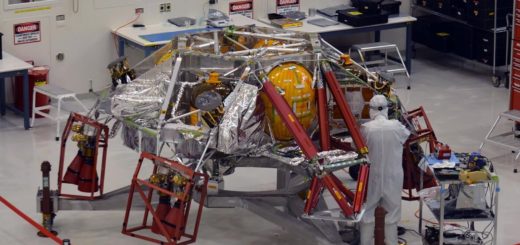Extraterrestrial life on the closest 1,000 stars to Earth could see us: experts

If indeed aliens do exist, they may be watching us from not too far away in space, a new study has found.
The research found there are 1,004 star systems that might contain Earth-like planets within 300 light-years of Earth that might be able “to detect Earth’s chemical traces of life.”
“If observers were out there searching, they would be able to see signs of a biosphere in the atmosphere of our Pale Blue Dot,” the study’s lead author, Lisa Kaltenegger, a Cornell University astronomer, said in a statement. “And we can even see some of the brightest of these stars in our night sky without binoculars or telescopes.”
The research has been published in the scientific journal Monthly Notices of the Royal Astronomical Society.
More than 4,000 exoplanets have been discovered by NASA in total, approximately 50 of which were believed to be potentially habitable as of September 2018. They have the right size and the right orbit of their star to support surface water and, at least theoretically, to support life.
Transit observations ‒ when astronomers look at a star and see it dim because another object has crossed in front of it ‒ have allowed astronomers to discover these planets, Kaltenegger added. This type of observation will be expanded when NASA launches its James Webb Space Telescope in October 2021. The JWST was delayed due in part to the coronavirus pandemic, Fox News previously reported.
If an extraterrestrial civilization had its own advanced equipment, similar to the JWST, they might be able to see us as well.
However, not all of the 1,004 star systems could observe us for an extended period of time: only 508 of them “guarantee a minimum 10 [hour] long observation of Earth’s transit,” the researchers wrote in the study.
“Only a very small fraction of exoplanets will just happen to be randomly aligned with our line of sight so we can see them transit,” study co-author Joshua Pepper, associate professor of physics at Lehigh University, added. “But all of the thousand stars we identified in our paper in the solar neighborhood could see our Earth transit the sun, calling their attention.”
The majority of the planets are likely able to support life for billions of years, leaving the researchers intrigued about studying them further.
“If we found a planet with a vibrant biosphere, we would get curious about whether or not someone is there looking at us too,” Kaltenegger explained. “If we’re looking for intelligent life in the universe, that could find us and might want to get in touch. We’ve just created the star map of where we should look first.”
In September, a separate group of researchers from Australia completed “the deepest and broadest search” looking for technological signs of extraterrestrial civilizations at more than 10 million star systems and came up empty.



 Creators of mankind
Creators of mankind Description of “Tall white aliens”
Description of “Tall white aliens” Where they came from?
Where they came from? About hostile civilizations
About hostile civilizations The war for the Earth
The war for the Earth “Tall white aliens” about eternal life
“Tall white aliens” about eternal life Video: “Nordic aliens”
Video: “Nordic aliens” Aliens
Aliens Alien encounters
Alien encounters The aliens base
The aliens base UFO
UFO Technology UFO
Technology UFO Underground civilization
Underground civilization Ancient alien artifacts
Ancient alien artifacts Military and UFO
Military and UFO Mysteries and hypotheses
Mysteries and hypotheses Scientific facts
Scientific facts


















